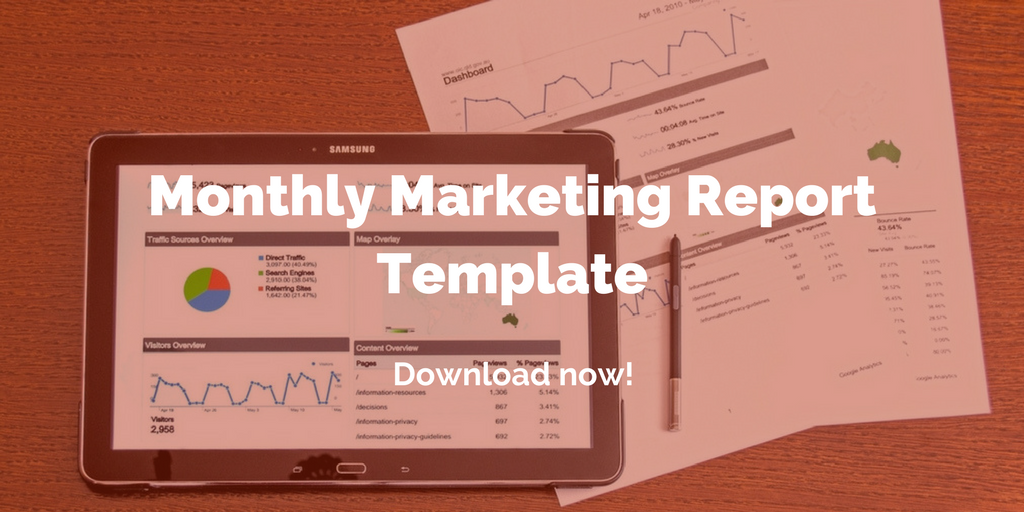
by Fronetics | Sep 13, 2017 | Blog, Content Marketing, Marketing, Strategy
Marketing can help sales close deals by providing targeted content that demonstrates the business value of the product or solution.
Sales and marketing often exist in separate corners. The marketing team works to create lead opportunities through content, and the sales team tags in to turn those leads into deals.
But a new survey report shows how this missed connection is having a real effect on businesses’ bottom lines. In fact, 49% of respondents cited a lack of communication as their biggest misalignment between sales and marketing.
But simply sharing marketing content with your sales team isn’t enough. Another new study shows that one of the 3 biggest mistakes salespeople make is not clearly explaining how their solution helps the buyer’s business.
“Buyers amass information that helps them justify their strategic decisions,” says author and University of Southern California Marshall School of Business instructor Steve W. Martin. “In other words, a product’s strategic value comprises the reasons and arguments that buyers provide to senior management and others in the company about why they should purchase a product.”
Let them have content
Strong communication between sales and marketing can help achieve big-picture goals, including:
- mutual understanding of the buyer’s journey
- updated prospect insights that can affect future marketing content
- brainstorming solutions to bottlenecks in the sales funnel
When your company begins to view sales and marketing as a joint unit, you’ll see a wave of data and resources flowing in both directions. While sales can provide deeper insights into audience relationships, marketing can use that data to provide sales with a wealth of targeted content.
Leverage sales reps as industry leaders
Studies continue to show that sales reps are most successful when they are viewed as experts in their field. A 2016 sales optimization report found that 92% percent of buyers engage if the rep is a known industry thought leader.
As thought leaders, members of your sales team should actively engage in discussions on social channels like Facebook, Instagram and Twitter with guidance from your marketing team. Rather than trying to sell, they can use those social spaces to share expert information and to be genuinely helpful.
Arm a sales rep with targeted content to share with prospects during specific moments in the purchase process, and it will advance his or her reputation as a source of knowledge. That can be the key to getting a foot in the door, advancing through the final stages of a purchasers’ decision, or closing the deal.
Related posts:

by Fronetics | Sep 6, 2017 | Blog, Content Marketing, Marketing, Strategy
Find the right marketing outsource partner for your business by asking specifically about strategy development, industry experience, and more.
More and more supply chain companies are choosing to outsource their marketing, giving them the flexibility to focus on their core business, while leaving marketing to trusted experts. But before you jump into a partnership, it’s important to remember that not all marketing firms are created equal.
To help you decide if a marketing firm is right for your business, here are 10 questions you should be asking potential marketing partners — and what to listen for in the answers.
10 questions to ask marketing outsource partners
1) How do you develop a strategy?
The word you should be listening for is: individualized. Your marketing partner should build a strategy specifically tailored to your business, based on data, analytics, and your company’s goals.
2) What would my account team look like?
When you outsource your marketing, look for a team of experts that work together to improve the various aspects of your marketing strategy. For example, the person running your social media presence should have specific social media expertise.
3) Do you know my industry?
It’s vitally important that your marketing partner has a deep understanding of your company, your industry, and your customers. Don’t be satisfied with a surface knowledge, or with a marketing firm that doesn’t have personnel that specializes in your industry.
4) How do you measure success?
Your marketing partner needs to have a plan in place to provide you regular and frequent reports showing designated metrics that match the goals of your strategy. For instance, if one of your business’ goals is to increase brand awareness, web traffic and social impressions are two metrics you should be getting reports on every month.
5) What other services do you offer (even if I don’t need them yet)?
Many of Fronetics’ clients start off wanting only one of our services (like social media management), but quickly realize a multi-channel digital strategy would better help them reach their goals. You want to know that, if you need to expand your scope of work to include more services (such as social advertising or video creation), your partner can handle those.
6) Do you offer training?
We’ve all heard the old adage about teaching a man to fish. While it can be hugely beneficial for your business to trust your marketing strategy to the experts, part of a well-rounded strategy includes educating key members of your staff, such as sales personnel, on how the rest of your business’ operations can dovetail with your marketing strategy. A partner who offers workshops or other types of training is a plus.
7) What is your philosophy for content creation?
Listen for a partner who listens to you. If you’re going to outsource content creation, your partner needs to be ready to learn every aspect of your business, its goals, and its philosophies — and to create content that reflects those things.
8) Do you have videography capability?
Even if you don’t think your business needs video content right now, chances are, this new wave content platform will be something you need at some point. You want to find a partner who can easily help you make strides in this area — whether the partner handles video production in house or will manage a third-party vendor for you.
9) What are your goals for my business?
You want a partner who shares your company’s vision. But it’s a bonus if you can find a partner who offers you goals you hadn’t even considered but that make sense for your business.
10) What’s the first thing you’re going to do when I hand over my business’ marketing strategy to your firm?
While it might be exciting to hear an answer like “revamp your entire web presence,” the savvier business listens for something a little different. A partner who assures that they will first seek to analyze, research, and understand every aspect of your unique business will ultimately be more likely to guide you to your goals. Once they know the ins and outs, then it’s time for the revamping!
Related posts:


by Fronetics | Sep 5, 2017 | Blog, Content Marketing, Marketing, Social Media
Use Quora to answer potential customers’ questions, and they’ll perceive you as a valuable source of knowledge and an industry thought leader.
Despite gaining popularity over the last several years, Quora’s potential as a marketing tool for supply chain and logistics companies remains largely untapped.
In case you haven’t jumped on the bandwagon yet, Quora touts itself as “a place to share knowledge and better understand the world.” It’s a simple premise, but one that’s been highly effective since its founding in 2009: “It’s a platform to ask questions and connect with people who contribute unique insights and quality answers.” Essentially, the site is a community-generated question-and-answer forum.
How does Quora work?
Anyone can ask or answer questions on Quora. A key feature of the site is voting feature: community members vote on which answers are most helpful, boosting those responders’ visibility and credibility. A few other things the site allows you to do:
- Target your question to specific users;
- Publish content (much like LinkedIn’s publishing platform);
- Search for questions or topics relevant to your business, and follow these keywords to get notifications of new questions.
You might already be starting to see the exciting potential in this social media platform. But let’s talk about three specific ways you can use Quora to build your brand, generate leads, and engage with your potential buyers.
3 ways supply chain and logistics marketers can use Quora
1) Research
Using Quora is about gaining and spreading knowledge. Your peers and competitors might be talking about their new projects with an audience that’s actively offering feedback on what it wants or doesn’t want. Before even jumping in with your own content, just staying attuned to the conversation can be a valuable resource as your business builds its marketing strategy.
2) Building and maintaining connections
Relationship-building is a key benefit of using Quora. While sites like LinkedIn and Twitter are valuable for quicker engagement, Quora offers a forum for substantive conversations, a crucial building block for lasting buyer engagement.
The site also offers a great opportunity to reach beyond your normal sphere. Emma MacAnnally of Torchlight suggests: “Don’t be afraid to ask questions and engage in conversations with others you respect and admire.” She points out that doing this will broaden your audience, offer new insights, and give you recognition with thought leaders in your field. “Networking can happen anywhere,” she says.
3) Reputation building
Quora offers you the ability to run a quick search of your business’ name, and tune in to what’s being said about your brand. Also, by answering others’ questions with substantive, reliable content, you can become a resource for potential buyers, as well as others in the industry.
Your business is more than its product. You can offer your audience valuable knowledge. Quora gives you a direct way to answer the questions that your potential buyers are asking, building your reputation as a resource for knowledge and as an industry thought leader.
Related posts:


by Jennifer Hart Yim | Aug 24, 2017 | Blog, Content Marketing, Manufacturing & Distribution, Marketing, Supply Chain
Here are seven tips for manufacturers to improve your email marketing strategy in the manufacturing and industrial sector.
This post comes to us from Adam Robinson of Cerasis, a top freight logistics company and truckload freight broker.
Email marketing is a powerful tool for growing and developing different types of businesses. However, many industries are still unaware of the power of using an appropriate email marketing strategy. Many manufacturers and industrial companies are still stuck in the one-off batch and blast mode of email marketing. That strategy is not likely to work very well in industrial marketing, where most of the purchases are expensive; complex products with long sales cycles, multiple decision-makers, and stakeholders are involved; and there is a much higher risk if a wrong decision is made.
7 email marketing tips for manufacturers
1. Avoid SPAM at all costs
The last thing that you want is for your emails to end up in someone’s spam folder or have your emails banned from someone’s inbox. Before you even start an email marketing campaign, you should print out the latest copy of the CAN-SPAM act to remind yourself of some email marketing principles, such as any recipient must have given their consent before receiving commercial email, have an option to unsubscribe from receiving further emails, do not mislead the recipient about the content or the origin of the email, and use approved methods to get a recipient’s email address.
2. Personalize your emails
You should avoid sending generic emails. Your recipients are not all the same, and you should make distinctions between them by segmenting your database. This means sending the same type of email diversified in some key aspects depending on the type of recipient. The content and filters of platforms such as Litmus and Reach Mail, which is based on personal data, geography, activity, and devices used, let you automate the entire process to narrow your focus and identify the ideal sub-section of your list.
3. Increase your traffic and clicks
By creating the perfect email marketing campaign, you will have the power to turn emails into clicks and traffic to your website. Sending relevant links to your subscribers will drive them to your website, and this increases the potential for new sales. If you want to give a real boost to your click-thru rates, you should keep in mind that you have to get rid of the clutter. Having an email that has too many graphics and banners will confuse your readers and leave them wondering what they are supposed to click on.
4. Offer quality content
You should always provide useful, quality content in an email and links to further information. Your emails should be more informative than sales-related, especially in the manufacturing industry. Talk about your company’s safety standards, advertise interviews with experts, and discuss pressing matters in your industry. Not presenting your information in a clear and accurate way will put off your recipients. You can take advantage of online tools to help you with your content writing. Use Australian Help and Oxessays as copywriting tools for writing your emails and Bigassignments to help you to edit your content. [Editor’s note: You can also partner with a third-party marketing firm to develop and execute an email marketing strategy for your business.]
5. Optimize your subscriber list
Do not rush out and buy an email list to get started with email marketing. You should grow your in-house subscriber list and get to know your customers and what they need from you.
6. Link your email platform with other channels
Email platforms, external databases, e-commerce, social media, and business intelligence systems can all be linked to optimize your business and reach more potential clients. Platforms such as Mail Chimp and Mad Mimi allow you to connect and integrate every system, synchronize the information on each, and have them communicate with each other.
7. Automation and tracking
You should try to make your email marketing strategy as efficient as possible with email marketing automation. Platforms such as the mentioned Litmus and Reach Mail will let you automate the entire process. Analyzing and tracking your campaigns’ performance is also essential. Using the analysis tools and reports available from the platforms we suggested will allow you to check and optimize your clicks, traffic, and sales.
Wrapping up the 7 email tips for manufacturers
There are many things to consider when creating an email marketing campaign. The main goal is to effectively connect with potential customers to persuade them to purchase your product by reminding them that you exist and that you are helping. Use these email tips for manufacturers to continually improve your sales and grow your industrial business.
Related posts:


by Fronetics | Jul 25, 2017 | Blog, Content Marketing, Marketing, Strategy
When you achieve sales and marketing alignment, your company will perform better. Here’s how to get there.
The State of Inbound 2017 reports that only 22% of respondents say their sales and marketing relationship is tightly aligned. That’s a big problem.
Sales and marketing teams that are tightly aligned perform better, and revenue increases as well. Clear and consistent expectations between the two teams results in positivity across the boardroom.
Here are 6 ways to embrace “smarketing,” the process of integrating sales and marketing.
6 steps to ensure sales and marketing alignment
1. Create an agreement.
Marketing strategies are three times more effective when a Service Level Agreement (SLA) aligning marketing goals with sales team practices is in place. The SLA clearly states how each side will help one another. Some 80% of respondents with an SLA in place who feel tightly aligned report that their marketing strategy is effective. Tightly aligned marketing and sales produces higher-value marketing leads.
2. Hear it from the top.
Demonstrate the value of aligned sales and marketing across all levels of the company. C-level executives know the importance of tight alignment, and when they communicate it to managers and individuals, it will boost key players’ confidence. Shout it from the rooftops so everyone gets the message.
3. Straddle both sectors.
Create a position or positions to supervise the alignment of both fields. That person can put a plan in place with measurable outcomes, as well as mechanisms for tracking client leads and feedback. First on the new position to-do list: devising an “Alignment 101” class to train each group on expectations and processes.
4. Monitor the revenue cycle.
Develop a system to keep track of leads from inception to signing on the dotted line. Make sure both sides of the aisle can (and do) access and update lead information, allowing everyone to take ownership of business successes. Monitoring the revenue cycle keeps everyone accountable.
5. Hold meetings and calls.
No one wants more meetings added to their calendars, but a weekly or bi-weekly check in gets everyone on the same page, imperative for tight alignment. Consider listening in on sales calls and attending each other’s networking events. Have fun learning about each other’s fields and how they overlap. A fresh set of eyes on something can often lead to a positive brainstorming session.
6. Create content.
Generating content for the sales team is a helpful way to partner up. Email templates, white papers, social media content, and Q&As are all tools salespeople can use to attract the attention of potential customers. Ask your sales counterparts how you can better support them.
Related posts:









